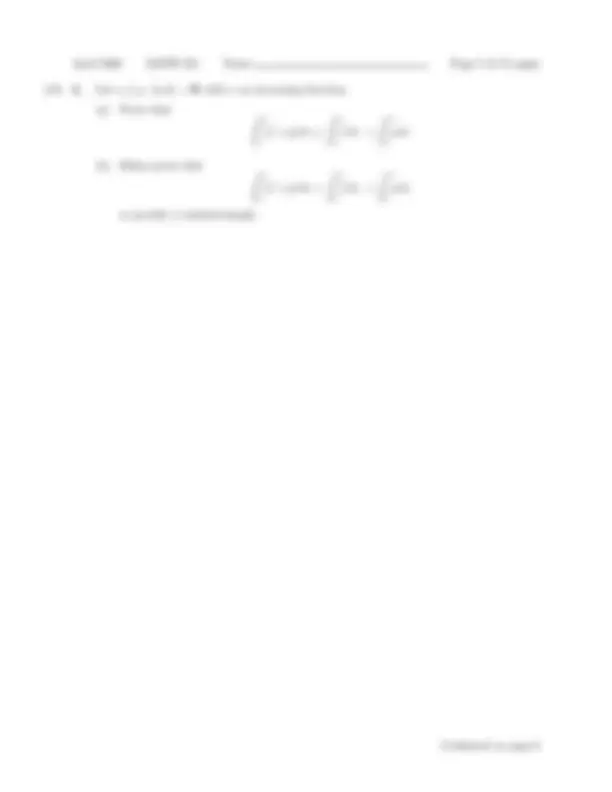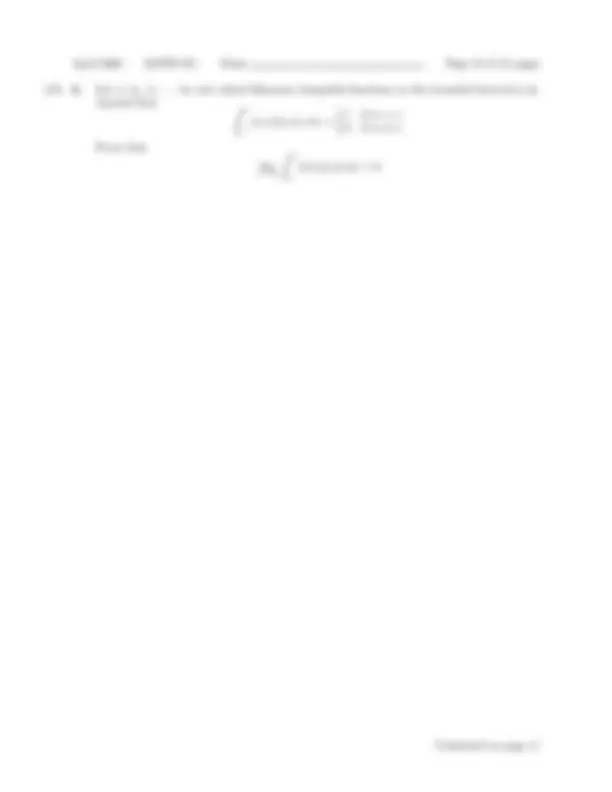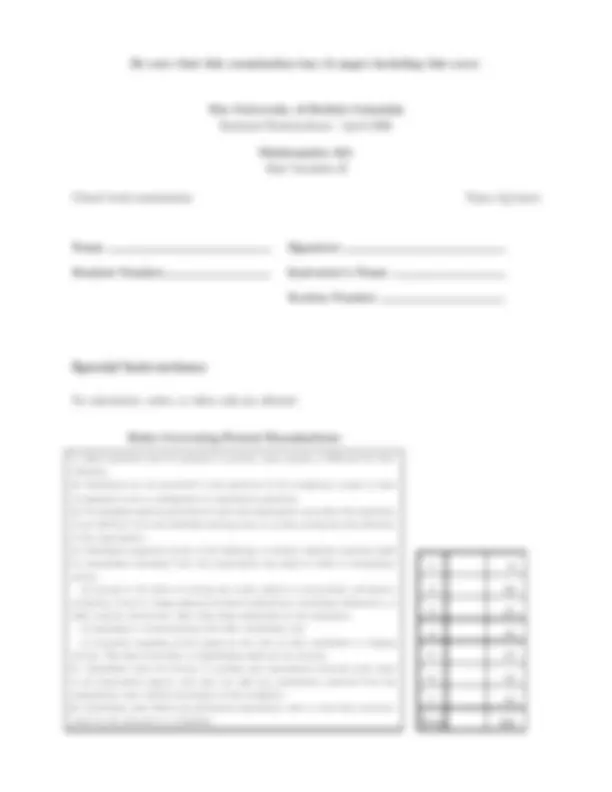









Study with the several resources on Docsity

Earn points by helping other students or get them with a premium plan


Prepare for your exams
Study with the several resources on Docsity

Earn points to download
Earn points by helping other students or get them with a premium plan
Community
Ask the community for help and clear up your study doubts
Discover the best universities in your country according to Docsity users
Free resources
Download our free guides on studying techniques, anxiety management strategies, and thesis advice from Docsity tutors
This is the Exam of Mathematics which includes Continuous, Number, Every, Domain, Continuous Functions, Laplace Transforms, Constant, Simplify, Evaluate, Value of the Constant etc. Key important points are: Atlas, Uniform Convergence, Sequence of Functions, Algebra of Functions, Vanishes, Maximal Atlas, Example, Riemann Integrable, Function, Converge
Typology: Exams
1 / 13

This page cannot be seen from the preview
Don't miss anything!








Marks
[9] 1. Define (a) uniform convergence of a sequence of functions (b) an algebra of functions that vanishes nowhere (c) an atlas and a maximal atlas
[16] 2. Give an example of each of the following, together with a brief explanation of your example. If an example does not exist, explain why not. (a) a function f : [0, 1] → IR which is Riemann integrable on [0, 1] but for which the function F : [0, 1] → IR defined by F (x) = ∫^0 x f (t) dt is not Riemann integrable on [0, 1] (b) a sequence of functions that converges to zero pointwise on [0, 1] and uniformly on [ε, 1 −ε] for every ε > 0, but does not converge uniformly on [0, 1] (c) a Fourier series (^) n=∑∞−∞ cneinx^ that does not converge in the mean (d) two charts for (− 1 , 1) (with the usual metric) that are not compatible
[15] 3. Let α, f, g : [a, b] → IR with α an increasing function. (a) Prove that ∫¯ (^) b a^ (f^ +^ g)^ dα^ ≤^
∫¯ (^) b a^ f dα^ +^
∫¯ (^) b a^ g dα (b) Either prove that ∫¯ (^) b a^ (f^ +^ g)^ dα^ =^
∫¯ (^) b a^ f dα^ +^
∫¯ (^) b a^ g dα or provide a counterexample.
[15] 5. Let {fn^ } n∈IN be a uniformly convergent sequence of continuous real–valued functions defined on a metric space M and let g be a continuous function on IR. Define, for each n ∈ IN, hn(x) = g(fn(x)). (a) Let M = [0, 1]. Prove that the sequence {hn^ } n∈IN converges uniformly on [0, 1]. (b) Let M = IR. Either prove that the sequence {hn^ } n∈IN converges uniformly on IR or provide a counterexample.
[15] 7. Let α > 0. A function f : IR → IR is said to be H¨older continuous of exponent α if the quantity
‖f ‖α = sup x 6 =y^ |f^ ( |xx)−−yf|^ α(y)| is finite. Let {fn^ } n∈IN be a sequence of H¨older continuous real valued functions on IR that obey supx∈IR |fn(x)| ≤ 1 and ‖fn‖α ≤ 1 for all n ∈ IN. Prove that there is a continuous function f : IR → IR and a subsequence of {fn^ } n∈IN that converges pointwise to f and that furthermore converges uniformly to f on [−M, M ] for every M > 0.
Be sure that this examination has 13 pages including this cover
The University of British Columbia Sessional Examinations - April 2008 Mathematics 321 Real Variables II
Closed book examination Time: 2 12 hours
Name Signature Student Number Instructor’s Name Section Number
No calculators, notes, or other aids are allowed.
Rules Governing Formal Examinations
Total 100